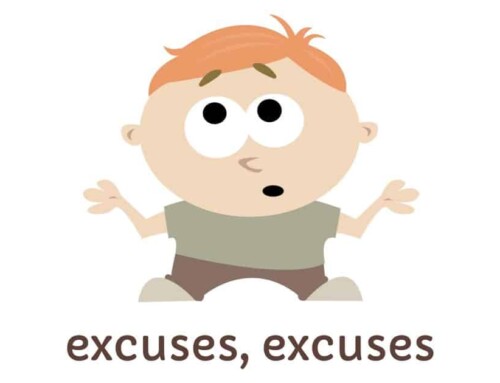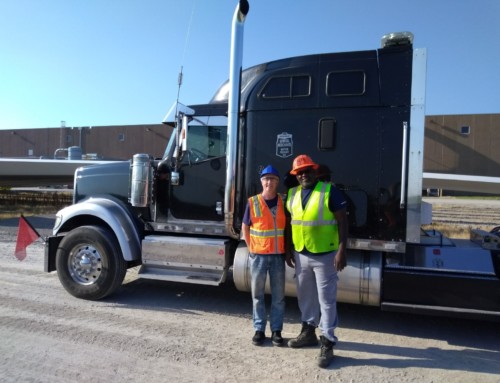I have often been afraid, but I would not give in to it. I simply acted as though I was not afraid, and presently the fear disappeared. –Theodore Roosevelt
Remember the little red engine. It was able to overcome a significant obstacle because it thought it could. Though the little train may not have realized it, its mechanical mind was dipping into the power of positive thinking. You can do the same thing when it comes to any fear you have about public speaking.
In some ways, the human brain is similar to a computer. Much like we can program a computer, we can program our thoughts about speaking. 
Positive, outstanding speakers (actors, athletes, leaders, and so forth) presume their success. They have learned to think and see their success in the present moment. You can direct your thoughts by declaring, “I welcome this opportunity to share and clarify my ideas. I am prepared and calm. I see myself communicating effectively and enjoying it!”
I’ve given hundreds of safety seminars, training sessions, safety meetings and inspiring talks, and I’m certain that what you say and think about before you step in front of your audience, makes a huge difference in how well you control the anxiety that wants to influence your delivery. It’s best if you tailor your psychological motivators to fit your personality, but there are some common factors that work with everyone–whether you’re shy or a “ham.”
FOCUS ON YOUR AUDIENCE NOT YOURSELF
This tip will help you more than any other single thing to be an exceptional safety speaker and trainer. In my case, once I’m well prepared, all I care about is the people in my audience. Every audience can sense when you care about their needs. However, an added feature to this tactic is the fact that it removes some of the apprehension you may have about being the center of attention because your audience takes over that role. It’s worth the extra work to find out as much as you can about your audience-even if you know them well.
One way you can do this is by taking the time to greet everyone that comes into the room. Even if you work with a person regularly, you’ll be surprised how much a simple handshake will accomplish.
Then, while you’re on stage pay attention to the folks looking at you. Notice their faces and mood. Don’t stay inside your head with thoughts about yourself such as “How am I doing?” “Is my voice shaky?” Will I forget what I’m want to say?” etc.
Play a Tape in Your Mind
So you have to give a brief “safety presentation” to a herd of managers. If it’s perfect, what will it look like? Picture that. How would you sound? What would the result be? What kind of questions would you be asked? How much more money will you make when the managers realize you are a wonderful communicator? Don’t think this is a fruitless practice in fantasy. Many amazingly successful presenter play a tape in their head that displays them as flawless speakers–before they get up and speak. (You should see some of mine! Tony Robbins would be jealous!)
Vocalize–Tell Yourself You’ll Be a Hit
Vocalize a few compliments. Affirmations are personal compliments. When you tell yourself that you’ll look good, say the right things, etc., you’re complimenting yourself– which is wonderful! I believe it was Mark Twain who said he could go all week on a single compliment. It doesn’t mean you are an egotist. It means you want to do the best job you can and if a few personal compliments help you reach that goal, you’d be lax for not using them. Tell yourself how dynamic and clear your safety presentation will be. Then believe it.
Prepare, Prepare and Then Prepare Some More
Even if you do all the neat stuff mentioned above, if you’re not prepared, you’ll probably be nervous. I’d rather lose a night’s sleep than give a 15-minute safety talk without enough preparation. One reason: I’ll be so darn nervous! Ten pounds of affirmations and three hours of mediation won’t make up for lack of preparation. So take the time to prepare. It shows in all different ways. Professional speakers will give you all different rules on this topic. Some say eight hours of preparation for every half-hour on the platform. Others say four. I say, whatever it takes so you make a positive impact on your audience. And if you care about them and do your best, you will.





